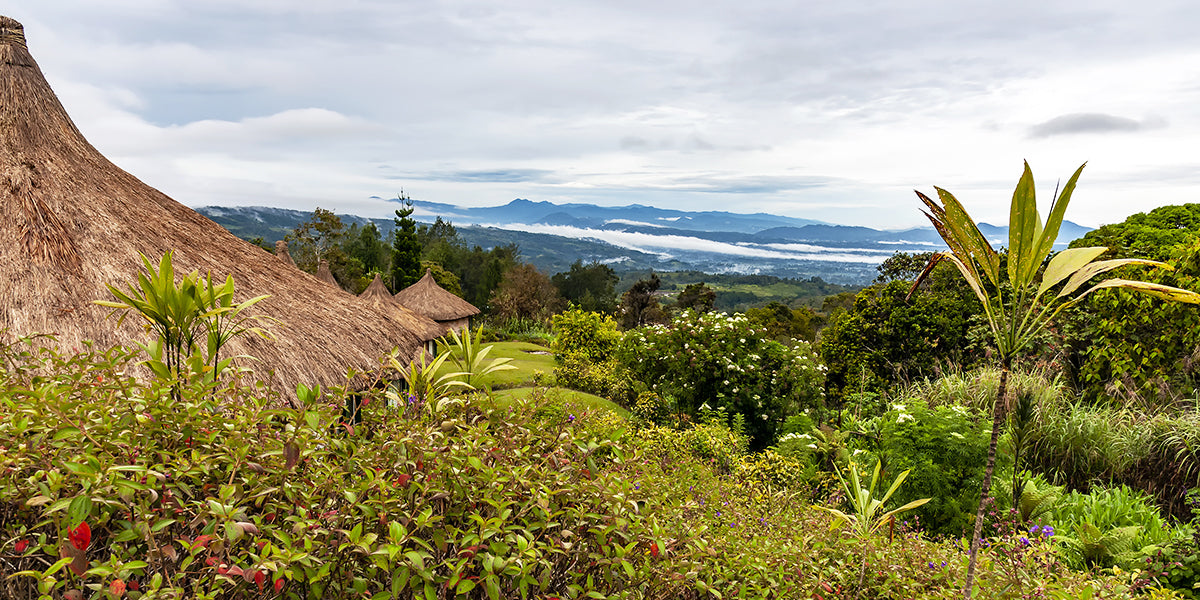Organic Papua New Guinea - Roasted Coffee
This is more than just coffee—it's an experience harvested from the lush, fertile highlands of the Bena Bena Valley, situated right along Papua New Guinea's legendary "Highlands Highway." Our Organic Papua New Guinea Coffee delivers a truly bold and satisfying cup that stands apart. This coffee is smooth and notably sweet with a medium body and creamy mouthfeel. The initial taste reflects candied walnut, chocolate, and spices and ends with a dark and fruity, remarkably clean finish.
Coffee first flourished here after the introduction of the prized Jamaican Typica variety (often called Blue Mountain). Today, our premium organic coffee beans are sourced from smallholder plots known locally as gardens. These gardens are integral to the community, serving not only as sources for exceptional Papua New Guinea arabica coffee but also for a diverse array of food crops, ensuring both quality and sustainability.
Papua New Guinea Bena Bena Valley Organic Coffee: Bold, Sweet, & Remarkably Clean
While many Indo-Pacific coffees are wet-hulled, our PNG coffee is meticulously wet-processed (fully washed). This crucial difference in processing is key to its spectacular flavor. This processing method develops a prominent, natural sweetness, while eliminating the heavy, earthy, or vegetal flavors often associated with other regional varieties, resulting in an exceptionally clean cup of coffee.
Ingredients: Organic 100% Arabica coffee.
Organic certified by PA Certified Organic. OU Kosher certified. Produced in an SQF-certified, renewable energy-powered facility.
At Fresh Roasted Coffee, we're pioneering the future of coffee. Our advanced, eco-friendly roasters unlock superior flavor in every bean while consuming less fuel and producing fewer emissions. In 2024, we're taking our commitment a step further. The launch of our new solar array will position us as one of the cleanest commercial roasters in the nation, proving that the most delicious coffee can also be the most sustainable.






























